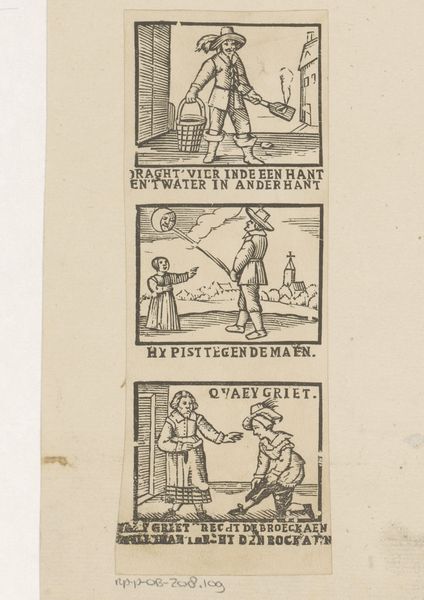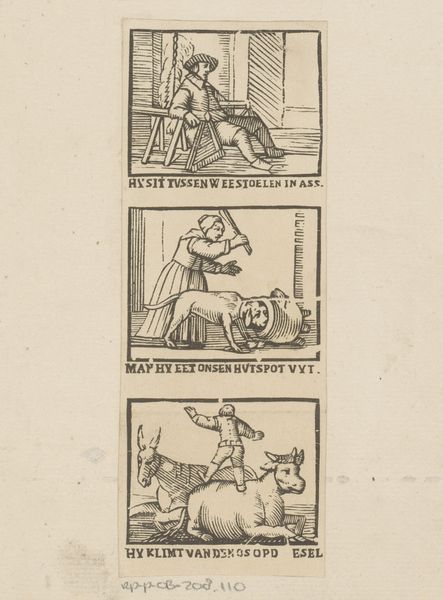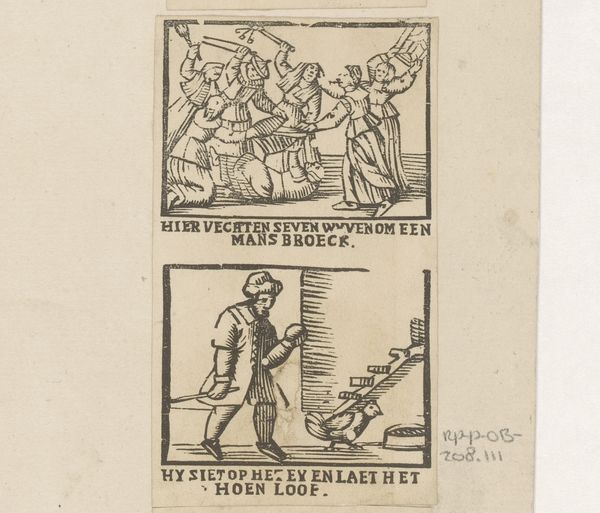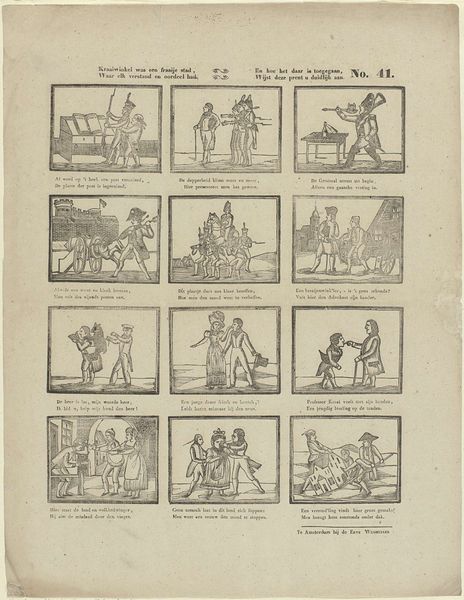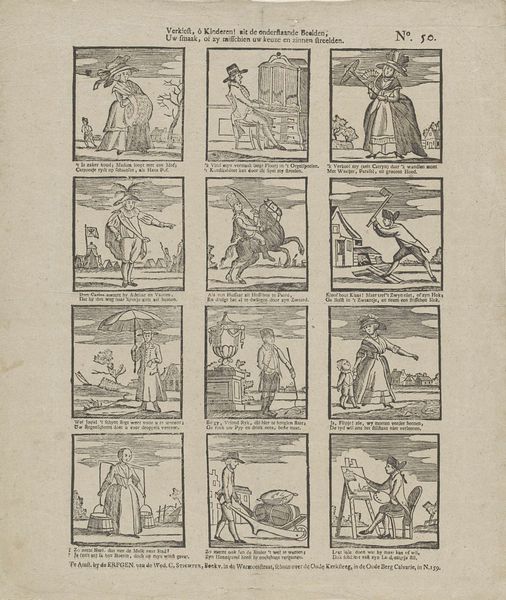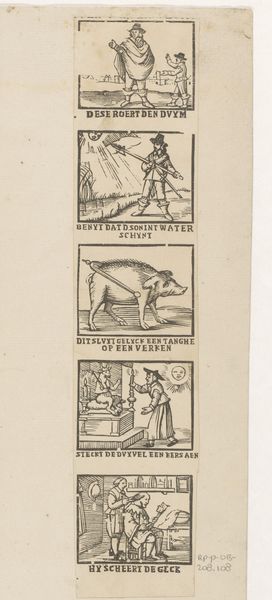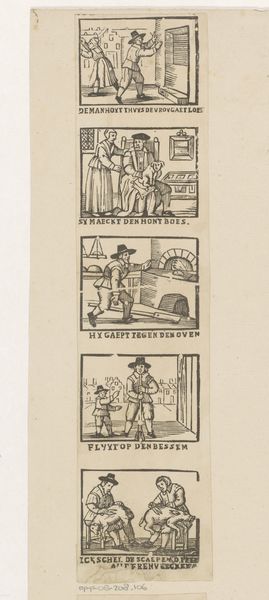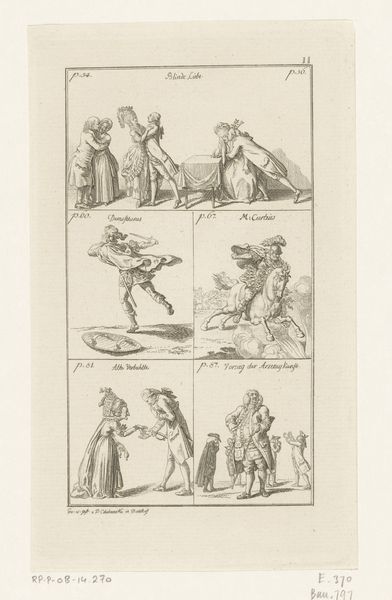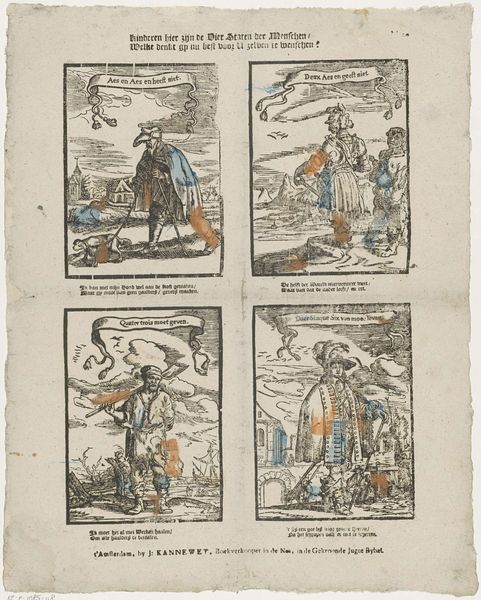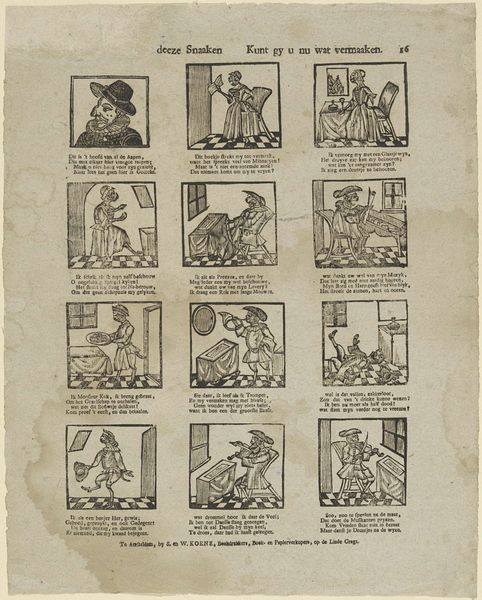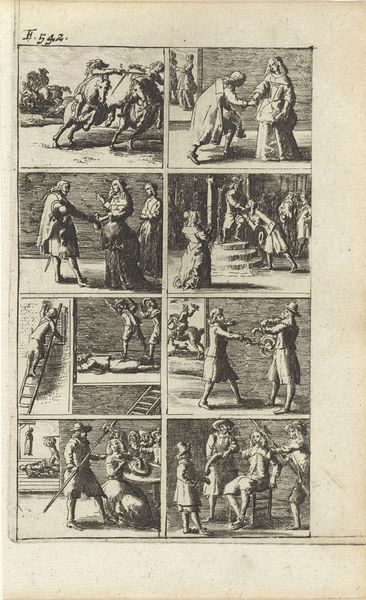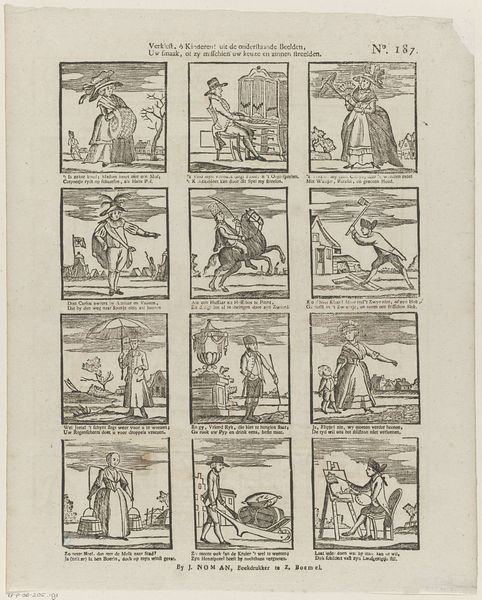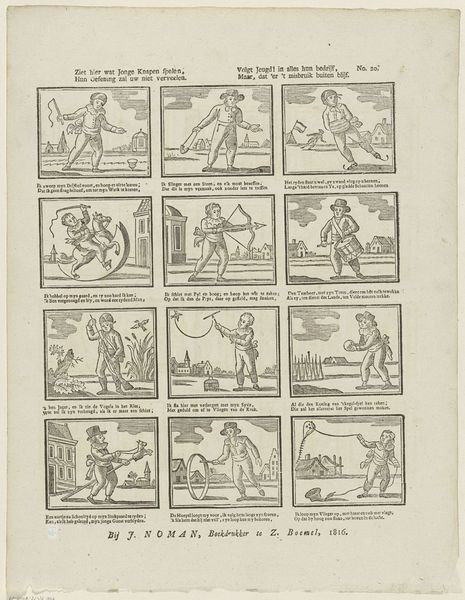![Afbeeldingh hoe seven wyven vechten om een mans broeck ende de vrou de broeck aentrecht [(...)] by Anonymous](/_next/image?url=https%3A%2F%2Fd2w8kbdekdi1gv.cloudfront.net%2FeyJidWNrZXQiOiAiYXJ0ZXJhLWltYWdlcy1idWNrZXQiLCAia2V5IjogImFydHdvcmtzLzNhYzRjZGUxLWY5ODAtNDBkYy04ZDc0LTIzZDYxNmEwMzVjZC8zYWM0Y2RlMS1mOTgwLTQwZGMtOGQ3NC0yM2Q2MTZhMDM1Y2RfZnVsbC5qcGciLCAiZWRpdHMiOiB7InJlc2l6ZSI6IHsid2lkdGgiOiAxOTIwLCAiaGVpZ2h0IjogMTkyMCwgImZpdCI6ICJpbnNpZGUifX19&w=3840&q=75)
Afbeeldingh hoe seven wyven vechten om een mans broeck ende de vrou de broeck aentrecht [(...)] Possibly 1700 - 1865
0:00
0:00
drawing, print, paper, pen, engraving
#
drawing
#
narrative-art
# print
#
pen sketch
#
paper
#
folk-art
#
pen-ink sketch
#
comic
#
pen work
#
pen
#
islamic-art
#
genre-painting
#
engraving
Dimensions: height 258 mm, width 57 mm
Copyright: Rijks Museum: Open Domain
This anonymous print, "Afbeeldingh hoe seven wyven vechten om een mans broeck ende de vrou de broeck aentrecht," presents a series of visual proverbs, each laden with symbolic weight. Consider the figure adorned with windmills, who embodies the proverb, “this one waits with all winds.” The windmill— a symbol of adaptability. We see echoes of this figure in earlier depictions of Fortuna, the Roman goddess of fortune, often shown with a wheel or rudder, steering through the winds of fate. The presence of the windmill evokes not just an individual adapting to circumstances, but a deeper anxiety about control and direction in a world driven by capricious forces. This resonates with our own subconscious, where the fear of the unknown meets the human drive to navigate life’s unpredictable currents. The non-linear path of this symbol— from ancient goddess to Dutch proverb, mirrors the cyclical nature of human experience, always resurfacing, evolving, and finding new forms.
Comments
No comments
Be the first to comment and join the conversation on the ultimate creative platform.
